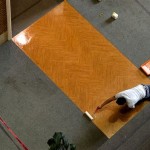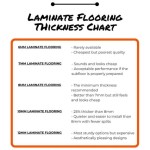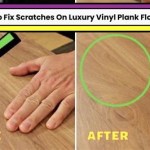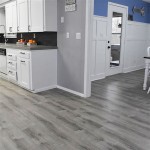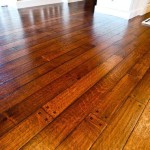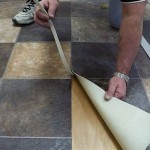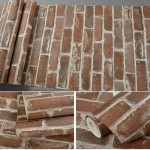```html
Parkay Hardwood Flooring: A Timeless Classic
Parkay hardwood flooring represents a distinct and enduring chapter in the history of wood flooring. It is characterized by its unique construction and aesthetic, offering a blend of durability and visual appeal that has resonated with homeowners and businesses for decades. Understanding the nuances of Parkay flooring – its composition, installation, maintenance, and advantages – allows for informed decisions when considering flooring options for new construction or renovation projects.
Unlike traditional solid hardwood planks or modern engineered hardwood, Parkay flooring typically consists of small, individual wood pieces, often squares or geometric shapes, arranged to form a larger pattern. These pieces are usually adhered to a subfloor, creating a stable and visually intricate surface. The woods used in Parkay flooring can vary, encompassing species like oak, maple, walnut, and teak, lending themselves to a diverse range of colors and textures.
Historical Significance of Parkay Flooring
Parkay flooring rose to prominence in the mid-20th century, becoming a popular choice for residential and commercial spaces. Its appeal stemmed from several factors, including the relative ease of installation compared to traditional hardwood planks, its inherent stability, and the aesthetic possibilities it offered. The pre-finished nature of many Parkay flooring options at the time also contributed to its popularity, reducing the on-site finishing time required for traditional hardwood.
The modular nature of Parkay flooring allowed for greater design flexibility. Intricate patterns, such as herringbone, basketweave, and parquet (the term itself often used interchangeably with Parkay), could be readily achieved without the need for specialized carpentry skills. This design adaptability made Parkay flooring a favored option for creating visually striking and sophisticated interiors. Moreover, the smaller pieces allowed for easier replacement of damaged sections, extending the lifespan of the floor.
While Parkay flooring experienced a decline in popularity towards the end of the 20th century with the rise of other flooring materials like laminate and engineered wood, it continues to be appreciated for its vintage charm and durability. Salvaged Parkay flooring is often reclaimed and repurposed, adding a unique and authentic touch to contemporary designs. The enduring appeal speaks to its inherent quality and the lasting impression it has made on interior design.
Construction and Installation of Parkay Flooring
The construction of Parkay flooring is a critical determinant of its performance and longevity. While variations exist depending on the manufacturer and specific product, a typical Parkay floor consists of individual wood pieces adhered to a subfloor. These pieces can be solid wood, though some modern variations may utilize an engineered wood core with a hardwood veneer. The adhesive used plays a crucial role in ensuring a strong and lasting bond between the wood pieces and the subfloor.
Proper subfloor preparation is paramount for a successful Parkay flooring installation. The subfloor must be clean, level, and structurally sound to prevent problems such as unevenness, squeaking, and adhesive failure. Any imperfections in the subfloor should be addressed before installation begins. This may involve patching cracks, sanding down high spots, or installing a leveling compound.
The installation process typically involves applying adhesive to the subfloor and carefully placing the individual Parkay pieces according to the desired pattern. Spacers may be used to maintain consistent gaps between the pieces, ensuring a uniform appearance and allowing for expansion and contraction of the wood. After the adhesive has cured, the floor may be sanded and finished to create a smooth and protective surface. Some Parkay flooring is pre-finished, eliminating the need for on-site sanding and finishing.
Modern installation techniques may incorporate underlayments to improve sound insulation and provide additional cushioning underfoot. These underlayments can also act as a moisture barrier, protecting the wood from moisture damage originating from the subfloor. The choice of adhesive is also important, with considerations given to its compatibility with the wood species and the subfloor material. Low-VOC (volatile organic compound) adhesives are often preferred for their reduced environmental impact and improved indoor air quality.
Maintenance and Care of Parkay Flooring
Maintaining the beauty and longevity of Parkay flooring requires consistent care and attention. Regular cleaning is essential to remove dirt, dust, and debris that can scratch or dull the finish. Sweeping or vacuuming the floor frequently is recommended, using a soft-bristled broom or a vacuum with a floor brush attachment. Avoid using vacuums with beater bars, as they can damage the wood surface.
For deeper cleaning, a damp mop can be used with a mild, pH-neutral wood floor cleaner. It is crucial to avoid excessive water, as moisture can seep into the seams between the wood pieces and cause warping or swelling. The mop should be wrung out thoroughly before use, and the floor should be dried immediately after cleaning. Avoid using harsh chemicals, abrasive cleaners, or steam mops, as these can damage the finish and the wood itself.
Protecting the finish from scratches and dents is also important. Placing rugs in high-traffic areas can help to reduce wear and tear. Felt pads should be attached to the legs of furniture to prevent scratches when moving them across the floor. Avoid wearing shoes with cleats or high heels on the Parkay flooring, as these can easily damage the surface.
Over time, the finish on Parkay flooring may wear down, requiring refinishing. The refinishing process involves sanding down the old finish to expose the bare wood, then applying new coats of stain and sealant. Refinishing can restore the floor to its original beauty and protect it from further damage. However, the number of times a Parkay floor can be refinished depends on the thickness of the wood pieces. Floors with a thin veneer may not be suitable for refinishing.
Addressing spills promptly is crucial to prevent staining and water damage. Blot up spills immediately with a clean, dry cloth. Avoid using harsh chemicals or abrasive cleaners on spills, as these can damage the finish. For stubborn stains, a specialized wood floor cleaner may be needed.
Humidity control is also essential for maintaining the stability of Parkay flooring. Excessive humidity can cause the wood to swell, while low humidity can cause it to shrink. Maintaining a consistent humidity level in the home can help to prevent these problems. A dehumidifier can be used to reduce humidity in humid climates, while a humidifier can be used to increase humidity in dry climates.
Proper maintenance and care can significantly extend the lifespan of Parkay flooring, preserving its beauty and value for years to come. Regular cleaning, protective measures, and prompt attention to spills and damage are all essential for keeping the floor in optimal condition.
Advantages and Disadvantages of Parkay Flooring
Parkay hardwood flooring offers several advantages that contribute to its enduring appeal. Firstly, its unique aesthetic provides a distinctive and timeless look that can enhance the visual appeal of any space. The intricate patterns and geometric designs create a sense of sophistication and elegance that is difficult to replicate with other flooring materials.
Secondly, Parkay flooring is known for its durability and stability. The small, individual wood pieces are less prone to warping and cupping than traditional solid hardwood planks, making it a suitable choice for areas with fluctuating humidity levels. The adhesive bonding the pieces to the subfloor provides additional stability and prevents movement.
Thirdly, Parkay flooring offers design flexibility. The modular nature of the flooring allows for the creation of custom patterns and designs, making it a versatile choice for a wide range of interior styles. The variety of wood species and finishes available further enhances its design adaptability.
However, Parkay flooring also has some disadvantages to consider. The installation process can be more labor-intensive and time-consuming than installing other types of flooring, such as laminate or vinyl. The individual pieces need to be carefully placed and aligned, requiring precision and attention to detail.
Secondly, Parkay flooring can be more expensive than some other flooring options. The cost of the materials and the labor involved in installation can add up, making it a less affordable choice for some homeowners. However, the long-term value and durability of Parkay flooring can offset the initial cost.
Thirdly, Parkay flooring can be more susceptible to moisture damage than some other types of flooring. Water can seep into the seams between the wood pieces and cause warping or swelling. Proper sealing and maintenance are essential to prevent moisture damage.
Ultimately, the decision to install Parkay hardwood flooring depends on individual preferences, budget constraints, and specific needs. Its unique aesthetic, durability, and design flexibility make it an attractive option for those seeking a timeless and elegant flooring solution. However, the cost, installation complexity, and susceptibility to moisture damage should also be carefully considered.
```
What Is Parquet Flooring Bennetts Carpets

Everything You Ever Wanted To Know About Parquet Flooring Artisan Wood Floors Llc

Parquet Flooring The 2024 Guide Floorings

Parquet Flooring Wood Floor Tiles By Czar Floors

What Is Parquet Herringbone Flooring Wood

Styles Of Parquet Flooring Whittlewoods

Fingerblock Parquet Flooring An Authentic Choice For Wood Floors In A Midcentury House Retro Renovation

Hardwood Parquet Flooring Everything You Need To Know

Parquet Flooring The Natural Wood Floor Co

Parquet Flooring The 2024 Guide Floorings
Related Posts

